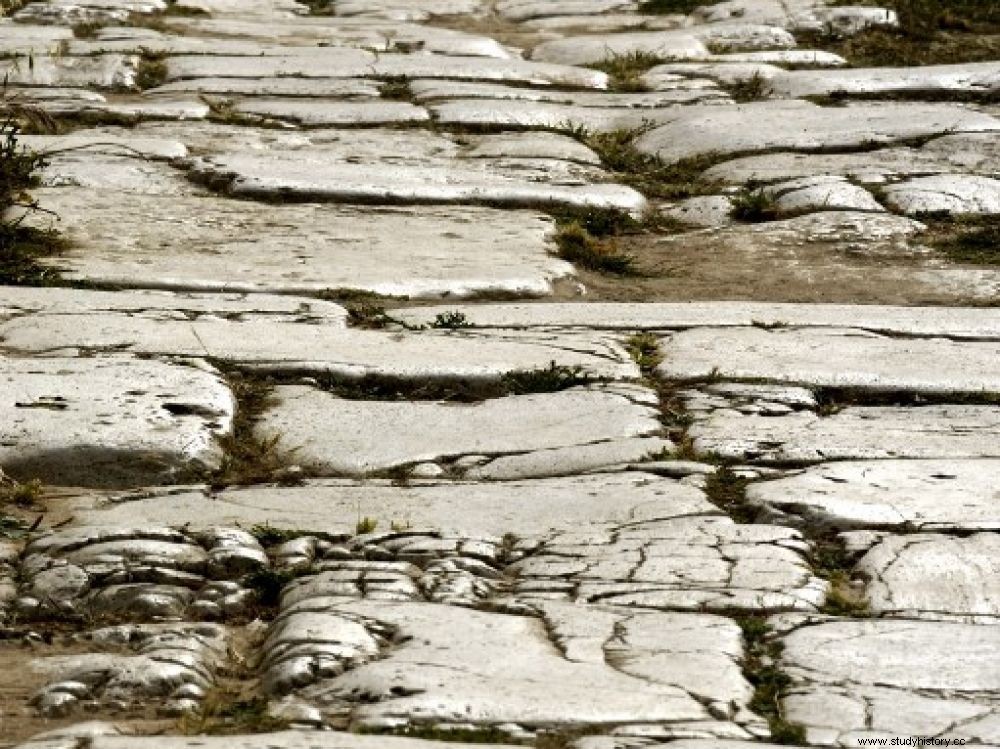In the Puy-de-Dôme, a Roman road was damaged by work to install an optical fiber.

Roman road in the UNESCO heritage site of Lepcis Magnia in Libya.
According to information relayed by France 3 Rhône-Alpes, a paved road linking Orcines to Chamalières in the department of Puy-de-Dôme, would have been split for installation work of a fiber optic line. It was the local residents who alerted the Regional Department of Cultural Affairs (DRAC), which dispatched a representative, Hélène Dartevelle from the Regional Archeology Service, to the site. The latter, who refused to answer our questions as well as those of other interlocutors, stopped the work pending an administrative or legal decision. This work was not carried out illegally, says the channel's journalist, Fabien Gandilhon, since the operator who commissioned the work would have all the necessary authorizations in hand. It seems that there was bad information given to the DRAC. The paved road that was damaged could date from Roman times, but no scientific study has validated this hypothesis.
Preventive archeology to avoid this type of disappointment
Usually work carried out on archaeological sites must be authorized by the DRAC, which will only grant it after having carried out a preventive archaeological investigation. It consists of going to the site where the work is planned to carry out a diagnosis to detect and characterize the archaeological elements of interest. Then, if necessary, excavations can be undertaken and the DRAC or the prefect also have the power to request modifications to the project in order to reduce the impact. And if the site is really exceptional, there is the option of classifying all or part of the land as historical monuments. Preventive archeology has made it possible in recent years to bring to light many testimonies from the past. Thus, quite recently, we reported on the discovery on the banks of the Rhône of a "little Viennese Pompeii".
